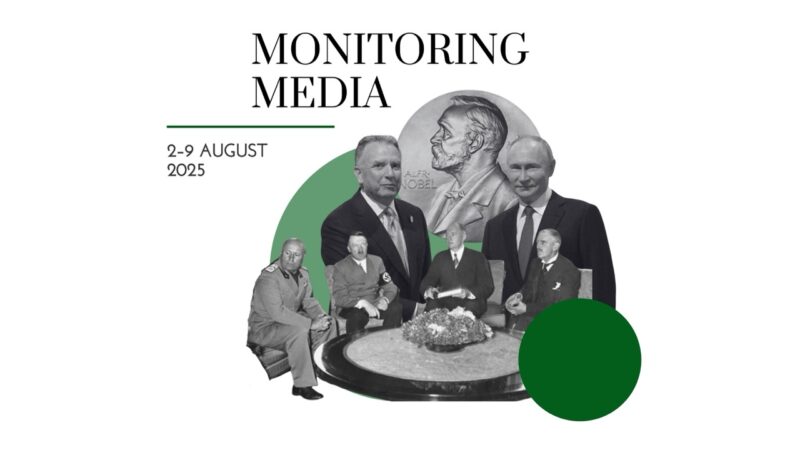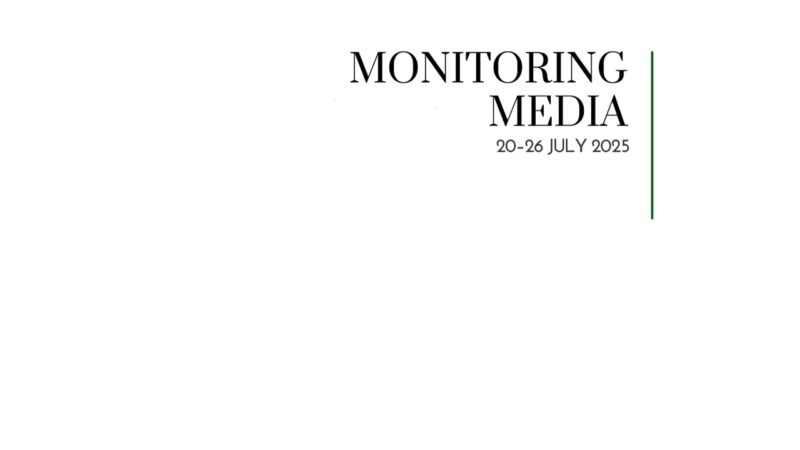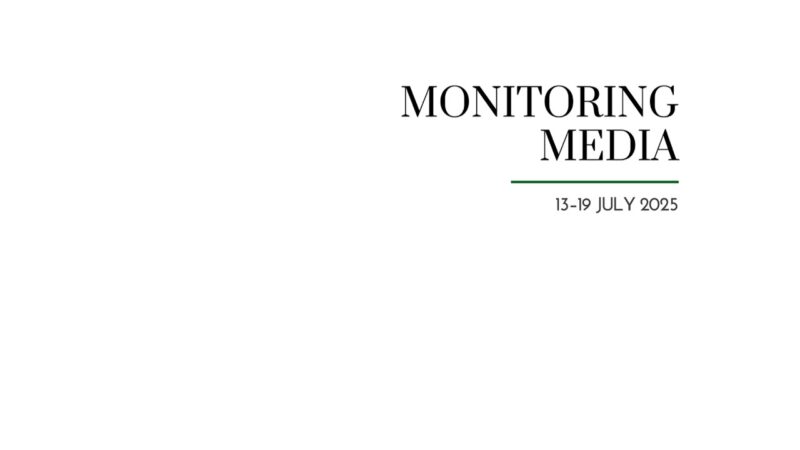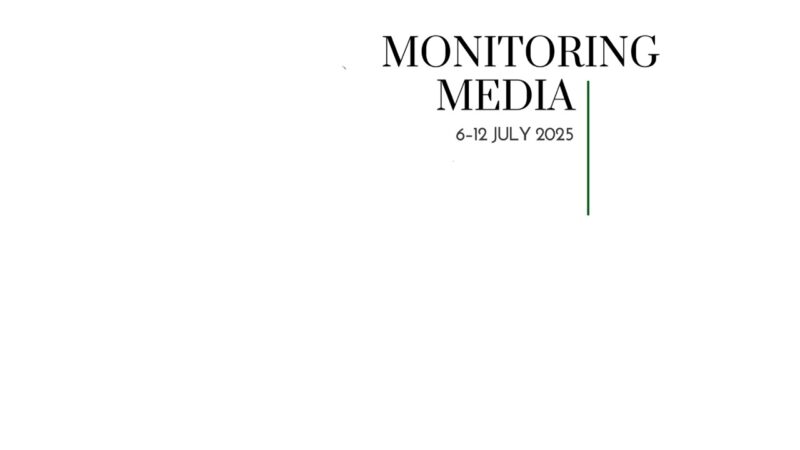Russia falls for Ukraine’s trap in Kharkiv oblast

CIUS weekly report on media coverage of Ukrainian affairs, 12–18 September 2022
Three North American magazines (The National Interest, The Economist, and The Atlantic) were selected to prepare this report on how the situation in Ukraine was portrayed in the media during the past week (12–18 September 2022). The sample of magazines was compiled based on their impact on public opinion as well as their professional reputation, popularity among the readership, and topical relevance. These three magazines represent the conservative, centrist, and liberal political spectrums.
This report covers only the most-read articles about Ukraine, as ranked by the respective magazines themselves in the past week. It also covers promoted texts on home pages, texts from special sections on Ukraine, texts from paper editions of the magazines, texts with a hashtag #Ukraine, and texts about Ukraine from opinion columns and editorials.
Topics featured in the selected articles:
- Ukraine’s current affairs: a stunning counterattack in the north surprises the West and demonstrates Ukraine’s battle prowess; more Western weaponry and investments are needed for Ukraine’s victory; Ukraine’s command may soon reconsider the pace and nature of its counteroffensive; medical personnel need to constantly update their training in order to best treat wounded soldiers;
- The world and Ukraine: the West should be ready for excessive arrogance of weakened Russia; the US should accept that Ukraine’s victory will solve old and create new problems;
- Russia at war: Russia’s command falls for Ukraine’s trap near Kharkiv; the Kremlin is ready to continue its gruesome military operations; the Kremlin’s aggressive foreign policies aim to weaken the West in the long run.
The most common arguments:
Ukraine accomplishes a stunning counteroffensive in Kharkiv oblast. The Economist writes that the Armed Forces of Ukraine’s lightning speed, breaking through Russia’s lines, had a profound effect on the dynamics and nature of the war. Firstly, the Russians have appeared to be not as invincible as they have portrayed themselves. In this light, the belief in Ukraine’s victory on the battlefield gained more domestic and international credibility. Secondly, the fleeing Russian troops abandoned hundreds of operational military vehicles. Near the liberated city of Izium alone, “the heavy armour turns into a river of metal. There are tanks, artillery pieces, and the remains of a TOS-1a heavy flamethrower with its rocket pod sheared off.” All this machinery will reinforce the Ukrainian army. Oleksiy Arestovych, a military advisor to the President of Ukraine, stated that “After the USA, Russia is the main provider of vehicles for the Ukrainian army.” Thirdly, Ukraine’s command proved its competence in planning fast, complex, and daring offensives. Ukrainian generals outwitted their Russian counterparts by publicizing a threat to make a major push in the south but attacking northeastern cities instead. And for their part, Ukrainian soldiers demonstrated impressive dexterity and motivation in executing their orders. Fourthly, “the loss of Izium probably now makes it impossible for Vladimir Putin to meet his stated aim of conquering the entire Donbas region to the south.” Another issue resides in the unlikelihood of Russians reconquering Izium and other cities without the heavy machinery which they left behind.
Ukraine’s successes proving to the West that they are serious about defeating Russia. Mark Temnycky (The National Interest) reiterates many of the arguments from The Economist and claims that contrary to many Western predictions, Ukraine not only managed to hold its ground under Russia’s attacks but made Russia retreat under its pressure. In late February 2022, “few in the West were willing to give the Ukrainians a chance. While international organizations quickly sent financial, medical, and humanitarian aid, several governments hesitated to provide defence aid to Ukraine. But as the war progressed…the resilience and grit of Ukrainian men and women changed many Western perspectives, and numerous countries…began to send the lethal aid Ukraine needed to defend itself.” The culmination of this resilience and grid occurred in September 2022 when Ukrainians liberated almost all of Kharkiv oblast in a matter of days, “while it had originally taken the Russians several months to claim this territory.” Temnycky concludes that Ukrainians have always been serious about winning the war and the West recently has acquired evidence of this resolve. Therefore, the more Western support is delivered to Ukraine today, the faster the war will come to an end.
Ukraine needs more Western weapons and economic support in order to liberate occupied territories. The same as Mark Temnycky, Melinda Haring (The National Interest) emphasizes that “retaking the large swaths that Russia still holds in Ukraine will not be easy, but the only way to enable a Ukrainian victory is by sending more weapons and economic support, not less.” Haring encourages Washington to respond to Ukraine’s requests for long-range missiles, tanks, and planes as this will speed up the resolution of war and prevent a bloody stalemate. By increasing its military support to Ukraine, Washington will not cross the Kremlin’s “red lines” as these lines have never existed in the first place. Apart from this, regardless of the war Ukraine’s banking, transportation, and energy systems are continuing to operate. Employees have retained their workplaces and are paid their wages on time. The major cities have returned to “normal life” with traffic jams regularly occurring on the streets. Therefore, by providing economic assistance to Ukraine, Washington will not be pouring money into a failed state where nothing is functioning. Finally, Haring argues that supporting Ukraine is the morally right thing to do: “Russian army forces are intentionally destroying non-military targets, including homes, schools, and critical infrastructure. Bereft of success on the battlefield, it has increasingly resorted to punitive missile strikes.” In this light, helping Ukraine is helping to prevent the destruction of a nation as well as the European values that it is defending.
Ukraine’s partners should reinforce its success by sending more and better weapons. In another of its topical articles, The Economist argues that one of the most significant achievements of Ukraine’s counteroffensive in Kharkiv oblast is the disruption of communication between Russia’s mainland and its troops in the Donbas. Apart from inflicting a symbolic blow and undermining Russians’ morale, this disruption puts on hold the Kremlin’s plans to incorporate the occupied territories into Russia’s sovereignty. The Economist also argues that Ukraine’s battlefield advances rest on two pillars: matériel and men. Both of these pillars look solid but require even more strengthening: “America and other friendly states have sent [Ukraine] rockets with enough range and accuracy to shift the terms of engagement…And whereas Russia is running down its stocks of weapons, Ukraine’s are growing both more plentiful and more powerful.” Speaking of Ukraine’s manpower advantage, the entire male population has been put on “mobilization” lists, the morale of Ukrainian soldiers is high, and their training and equipment are increasingly approaching NATO standards. Meanwhile, Russian soldiers are experiencing war fatigue, exhaustion, and disbelief in the objectives of the “special military operation.” Putin’s regime is gradually losing its stability and cachet of victory. In this light, the West would do well to continue reinforcing Ukraine’s successes and remove Russia’s leverage in its economy and decision-making.
Ukrainian command must decide whether to dig in or continue on the offensive. The Economist highlights that “one month ago analysts wondered whether Ukraine had the capacity for a big offensive. Now they ask how far it will go.” At the same time, “Ukraine’s general staff must decide whether to husband their resources or press home their advantage with a third attack.” In its article The Economist offers an overview of the military situation in the southeastern Ukrainian theatre, including: the ability of Ukraine’s army to achieve decisive victories, the exhaustion of Ukrainians and their limited capacity in logistics/equipment to continue the counterattack, the long-lasting effects of panic and disarray in the Russian army, the regrouping and fortification of Russian forces in Luhansk oblast, Russian problems with manpower and weaponry, Russia’s lack of officers and command staff, Ukraine’s possible advances in occupied Zaporizhia oblast, and other issues. The Economist also compares Ukraine’s operations in Kharkiv and Kherson oblasts, claiming that the former was planned as a surprise “punching through” Russian lines while the latter is a more lingering endeavour: “it is spread across a much larger front, designed to proceed more slowly, and focused less on territory than on making life as uncomfortable as possible for the Russian soldiers based there.” The Economist concludes that the Kremlin has not abandoned its original ambition of conquering south-eastern Ukraine, but has to significantly modify its plans.
The bigger Ukraine’s battlefield successes, the less clarity regarding the war’s final outcome. Elliot Ackerman (The Atlantic) acknowledges that Ukrainians regained the initiative in the war and reflects on what victory means for them and the West. With every new development, “the lack of consensus on what that word means becomes more obvious. For some, victory is a Russian withdrawal to its pre–February 24 borders; for others, Russia must not only withdraw but also pay reparations to Ukraine, and the European community must offer security guarantees, including NATO membership; for still others, victory also includes the restoration of Crimea.” Becoming a victorious power also comes with hidden dangers for Ukrainians. It has often happened in history that nations, spoiled by the successes of their offensives, decided to push even further and eventually hit disaster. Ackerman warns Ukraine’s strategists against falling into such a trap. He also highlights that Ukrainians are fighting a war of survival, while Russians are also targeted by the Kremlin’s manipulations and propaganda, generally providing only passive support of the “special military operation.” Indeed, Russians have yet to acknowledge the gravity of the situation they find themselves in. Ackerman concludes that victory “must be defined in a way that’s palatable to a majority of Ukrainians, but it must also be achievable on the battlefield and not so punitive that it shifts political realities inside Russia, creating narratives for Putin to exploit.”
Rehabilitation needs of Ukraine’s wounded soldiers prompts significant redesign of the state healthcare system. Wendell Steavenson (The Economist) opens her article with a statement that “even successful military operations leave troops with life-changing injuries.” This certainly applies to Ukrainian soldiers, who often have to undergo long and complex rehabilitation. Steavenson describes numerous aspects of this rehabilitation, emphasizing soldiers’ shock and disorientation in the reality of post-combat life. While in hospital, they continue reliving events of the battlefield, think of their comrades, reflect on factors like luck and preparation, and rail against accepting their injuries. These traumas are very different from what civilians might suffer: while the torsos and heads of the soldiers are relatively well-protected, their limbs are often torn by shrapnel and other debris. Steavenson writes also about the assistance of volunteers who support the wounded soldiers with everything from helping them change underwear to providing psychological support. Finally, Steavenson writes about the work of doctors, especially surgeons, who have had to re-educate themselves and become specialists in combat medicine within weeks. One of the major challenges that they face is not to overlook any piece of cloth, wood, asphalt, or other debris in the body of the soldier that may lead to infection; such debris is not visible on x-rays. Another challenge is to understand why an injured limb is not working properly despite a positive recovery. Finally, there is the problem of amputation of limbs, which doctors are very reluctant to conduct (i.e., instead of “putting things back together” they need to “take something away”).
US should not fear global reverberations from Ukraine’s victory. Kori Schake (The Atlantic) begins by stating that “Volodymyr Zelensky has made clear that Ukraine is fighting for its freedom, and Vladimir Putin has made clear that Russia is fighting to destroy Ukrainian independence. Right now, the Ukrainians seem most likely to get what they want. And the United States shouldn’t fear the consequences of their victory.” These consequences are, in particular, reinforcement of human dignity, political liberty, and national security worldwide, as well as proof of the effectiveness of civic activism in the face of existential threats. Schake believes that Russia is not winning the war and is unlikely to win it even if nuclear weapons are deployed; the reason for this is the spirited motivation of the Ukrainians and their belief in fighting for morally right things. Schake concludes that “as we begin to think about a postwar Ukraine, we should not let the failures of pre-war Ukraine shackle our thinking about who Ukrainians are and what they are capable of. They deserve our continued, increased help to win their war and reconstruct their country within the confines of the West.”
Russia followed Ukraine’s plan during the Kharkiv counteroffensive. Phillips Payson O’Brien (The Atlantic) writes that Ukraine’s counteroffensive in the north “was anything but sudden. It resulted from a patient military buildup, excellent operational security, and … the diversion of some of the Russian army’s most powerful units from Kharkiv Oblast itself. The overall planning by the Ukrainian government and armed forces … produced one of the greatest military-strategy successes since 1945.” To achieve this success, Ukraine’s command made a false impression that they would attack the southern city of Kherson, making Russia relocate its troops there from other fronts. Then the Ukrainians broke through Russia’s thinned lines around Kharkiv and dispersed the poorly trained, demotivated, and underequipped occupying troops. O’Brien concludes that “the Ukrainians wrote a script, and the Russians played their assigned role.”
Russia is ready to wage a long, ugly, and bloody war no matter the costs. Ted Galen Carpenter (The National Interest) praises Ukraine’s successes in fighting Russia, but warns that “NATO leaders and the Western news media need to realize that they may be celebrating the prelude to a prolonged, extremely bloody war or even an impending nuclear catastrophe.” Regardless of the damage suffered, the Kremlin seems to have few effective military options on its sleeve. One option, according to Carpenter, resides in the redeployment of troops and making a major push toward Odesa to cut Ukraine off from the sea. A second option is to bring troops back from the southern to the northern theatre and encircle Ukraine’s victorious units in Kharkiv oblast. A third option is to announce a mobilization in Russia which, as Carpenter believes, should “give Moscow an insurmountable advantage.” The fourth option is “to resolve matters quickly and decisively by using tactical nuclear weapons” and causing Ukraine’s “effective resistance to crumble.”
Russia’s postwar military reconstruction would make the whole world a more dangerous place. Edward Salo (The National Interest) notes that Russia has lost a considerable amount of its military equipment and soldiers in Ukraine. Therefore, “no matter the outcome of the war, based on these current losses (and projections of future losses), Russia will face a dilemma on how to re-equip, train, and utilize its military in the future.” Salo outlines five scenarios for Russia’s postwar policy of regaining lost potential. The first is “No Rebuilding”: due to political and economic obstacles, Russia could decide not to restore its military capacity. This scenario is unlikely to occur, as a strong army has always been a pillar of every Kremlin regime. Also, a weakened Russia would no longer be a stabilizing factor in its region leading to new instabilities. The second scenario is “Rebuild the Russian Military as Before”: the army would return to its pre-invasion levels of operationality with minor changes to structure. This scenario is also unlikely to happen, as the Russian command will learn its lessons from the war and push for changes. The third scenario is “Rebuild With Help From Allies”: “rather than relying on just the existing Russian military-industrial complex to rebuild the military, Russia could team up with its allies to rebuild the military.” Primarily these allies would be Iran and North Korea. This scenario would signify that Russia accepts its position as a power in decline. The fourth scenario is “Change Doctrine and Retool the Military”: a complete redesign of its military philosophy, which proved to be outdated and ineffective in 21st-century war. The problem here is Russia’s financial and economic unpreparedness to implement profound revisions, as well as the still-traditionalist thinking of the Kremlin’s strategists. The fifth scenario is “Rely on Nuclear Deterrence”: regardless of any successes in restoration of the conventional military, the nuclear weapon would become a crucial element in the Kremlin’s strategic thinking. This scenario would make the whole world a more dangerous place.
Russia expects to re-shape the world order with the help of non-Western nations. Clint Reach (The National Interest) argues that the Kremlin is looking for new political leadership across the Western world that is willing to change the existing status quo and dismiss Russia’s isolation “from the capital and technology it needs to generate security and prosperity over the long term.” Reach offers a geopolitical vision of a global regime that would make the Kremlin feel comfortable and defines this regime as “Bipolarity 2.0.” This regime anticipates the erosion of the US-promoted “intense globalization,” dispersal of global power to the benefit of non-Western countries, China overtaking the US in military potential, fragmentation of the European Union into smaller nation-states, and reinforcement of traditional values to replace liberal ones worldwide. Under such a scenario, Russia would acquire a better chance of managing conflicts in Eurasia, as well as closing the gap in economic development with the US. Therefore, the invasion of Ukraine “was a violent but necessary shove in the direction of a new order resembling Bipolarity 2.0.” The invasion was expected to challenge the homogeneity of the international system and limit American dominance, especially in the heart of Eurasia. However, as Reach notices, the invasion “is not yet producing obvious signs of a favorable shift toward a global realignment to Russia’s benefit.”





